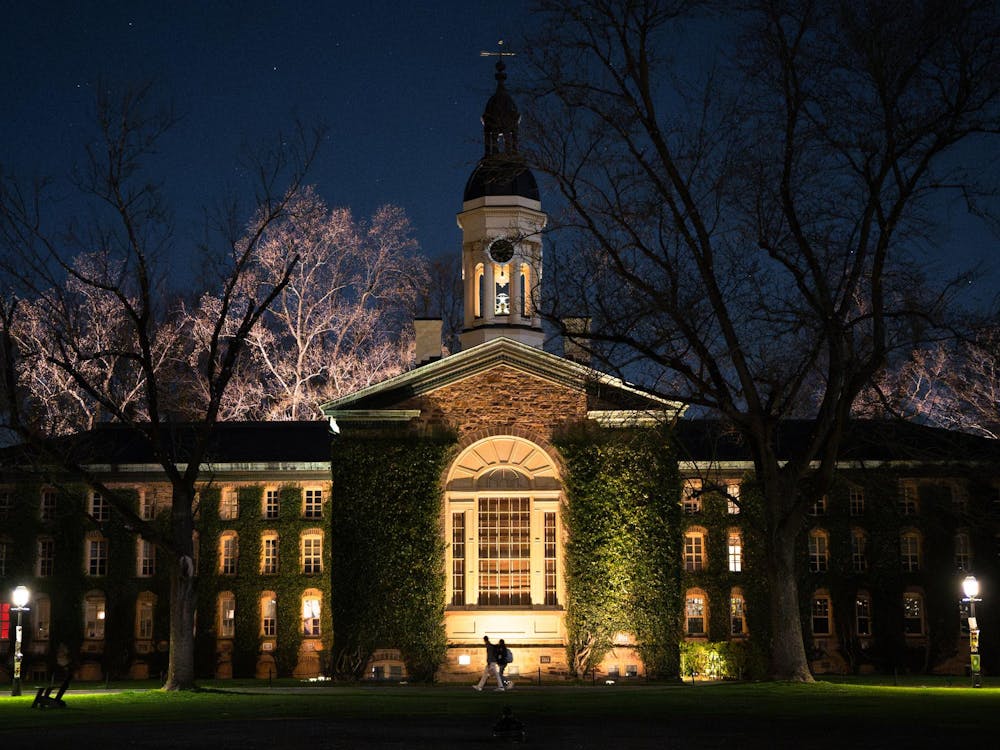In Monday's Prince, Sasha Rao argued that Christian activist Pat Robertson's forthcoming remarks at Whig-Clio should be prohibited on the grounds that they constitute "hate speech," in accordance with the portion of "Rights, Rules and Responsibilities" that forbids "expressions of hatred directed against any individual or group."
Resolving this debate is possible only if the emotional sensitivities of students are uniform — specifically, if Rao's conception of hate resonates with every member of the Princeton community. Which is to say, it will not be resolved.
Nonetheless, now that verbal sparring over censorship of controversial speakers has become routine for college students, perhaps the perpetual irreconcilability of such debates will point us toward a related concern: that these disputes are dissatisfying by design, the product of a philosophy of higher education that places sensitivities and ideas on the same moral plane. Along these lines, I hope that the controversy surrounding Robertson's arrival on campus will hinge not on the best interpretation of the relevant regulation in "Rights and Rules," but rather on whether the regulation itself is legitimate.
This can be seen clearly by analyzing the claim that Robertson's remarks will be hateful. Simplifying things a bit, think of every speech as having three parts: intention, content and interpretation. With few exceptions, only the content of the speech is a matter of public record that can be verified and disputed with reference to fact. And yet, undeniably, it is the personal interpretation of that content by listeners that will prevail in the event that a student demands formal action by the University. Left out of this hate assessment, predictably, is the speaker's intent, the component of the remarks that corresponds closely to conventional standards of hatred.
For instance, suppose Rao is correct in assuming that Robertson will scrap his prepared remarks and give the audience a top 10 list of his most offensive comments over the past twenty years, culminating in an assertion that the economic independence of women has been a regrettable phenomenon for its tendency to destabilize two-parent families.
It seems difficult to isolate the "hate" intrinsic to this hypothetical remark. There is no more "intense disgust" for a particular individual or group than was directed at Robertson in Rao's own oped piece. Its premises and conclusion are clear, even if off the mark. Were the University to forbid this remark on hate speech grounds, it would likely depend on the sensibilities of the audience. Considerations normally reserved for judging an oratorical contest — tone, eye contact, loudness — would become decisive when sorting out the vagaries of "Rights and Rules." Robertson's likely inability to persuade his adversaries will be mistaken not only for the wrongness of his argument, but the malice with which it was conceived.
Likewise, consider the following statement: "It may still be objected that to replace either a fetus or a newborn infant is wrong because it suggests to disabled people living today that their lives are less worth living than the lives of people who are not disabled. Yet it is surely flying in the face of reality to deny that, on average, this is so."
This excerpt from Professor Peter Singer's "Practical Ethics" should suffice in demonstrating the dangers of enforcing speech regulations that in practice depend on how comments are received by ostensibly aggrieved audience members. This danger, it should be noted, is distinct from the traditional problems associated with free speech regulations, which are often very specific about the content they curtail (swear words during prime time television, for instance). Princeton's code does not delve deeply into illustrating the nuances of hateful content, causing at least one civil liberties group, the Foundation for Individual Rights in Education, to give the University its lowest rating.
It would be a mistake, though, to aim merely for the elimination or, minimally, clarification of the hate speech regulations within "Rights and Rules." Ultimately, the principle motivating these regulations – modern political liberalism (John Rawls, not Ted Kennedy) — is the appropriate subject of inquiry.
Criticisms of liberalism's tolerance for all but the perceived intolerant are well known. Less recognized are the particular problems associated with its makeshift application to the world of education, where time and resource constraints inevitably prevent complete neutrality views expressed in the curriculum. Compelled by these practical considerations and the modern liberal's overriding concern for "mutual respect," theorists — including, prominently, Provost Amy Gutmann — simply wish away the bad stuff. Gutmann, for instance, proposes censorship of "irrational" statements which, like restrictions on "hate," almost encourages arbitrary enforcement.
Lost in all this — in the incoherent notion of "mutual respect," liberal educational theories more generally, the hate speech protections those theories generate, and the furor over Pat Robertson's upcoming speech those protections give rise to — is a concern for the truth. It shouldn't be breaking news that expressions allegedly brimming with hatred can be equally rich in truth; like it or not, Singer and Robertson may be right about a few things. And, certainly, we've got to hear them out before deciding. "Rights, Rules and Responsibilities" and other products of liberal educational theories might want to take note.








